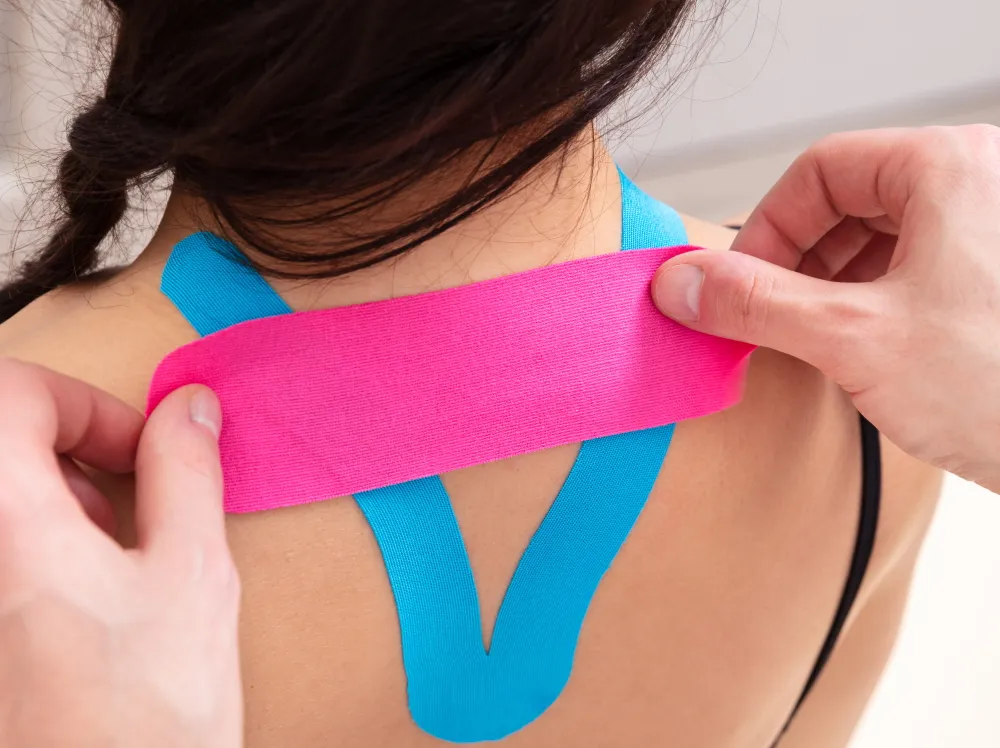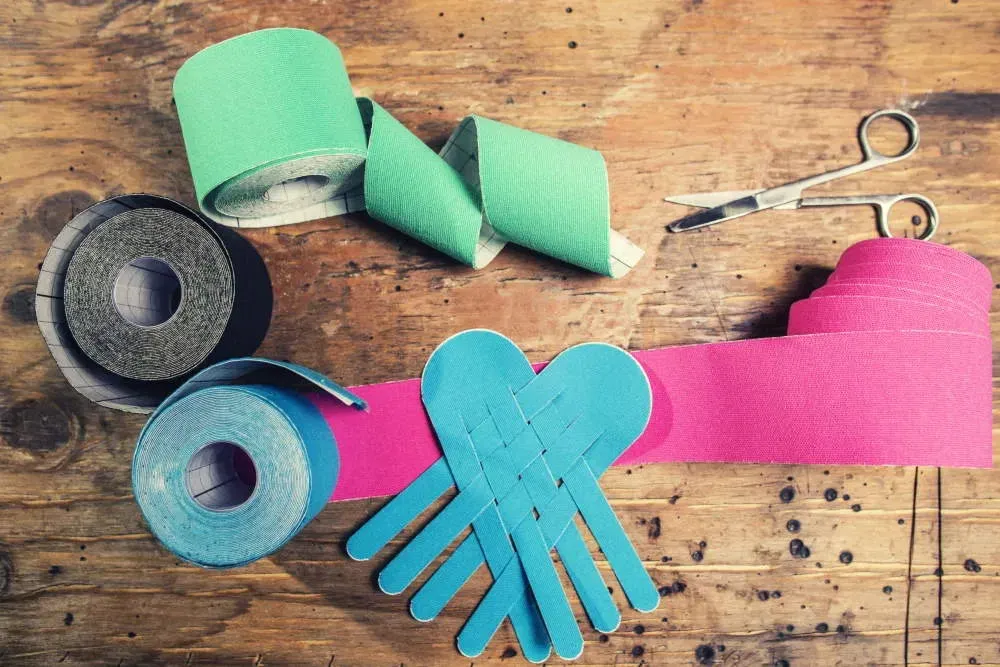The Kinesio Taping Method (also referred to as K-Taping) is a rehabilitative taping technique that is used to facilitate the body’s natural healing process while providing support and stability to muscles and joints without restricting the body’s range of motion. It is also used to prolong the benefits of manual therapy administered within the clinical setting, thus improving the outcome of soft tissue mobilization, joint mobilization and joint manipulation.
Kinesiology taping is done with a K-Tape, or KT, which is an elastic cotton strip with an acrylic adhesive. It has the elasticity similar to that of skin, so when applied on skin you can have your full range of motion without any restrictions. The tape’s medical-grade adhesive is also water-resistant and strong enough to stay on for three to five days, so you can work out or take showers with the tape on.
How Kinesiology Taping works
When the tape is applied to your body, it recoils slightly, gently lifting your skin, creating a microscopic space between your skin and the tissues underneath it. When applied over the joints it slightly increases space there, helping to reduce the joint irritation.
Kinesiology taping changes the signals on pain pathways. All of your tissues — skin, connective tissue, fascia, muscles — contain sensory receptors that feel pain, temperature, and touch. All those receptors contribute to proprioception that is your brain’s sense of where your body is and what it’s doing. Kinesiology taping creates a lift that unloads the underlying tissues. Decompressing those tissues can change the signals going to the brain. We also use kinesiology tape to lift the skin over tense, knotted muscles called trigger points. When the area is decompressed, pain receptors send a new signal to the brain, and tension in the trigger point decreases.

Taping helps improve circulation of blood and fluids. If you’ve been injured, kinesiology tape might help improve circulation and reduce swelling in the area where you’re hurt. The theory is that when kinesiology tape is applied, it creates extra subcutaneous space, which changes the pressure gradient in the area underneath your skin. This change in pressure enhances the flow of lymphatic fluid. Changing the flow of lymphatic fluid helps bruises heal faster.
What is Kinesiology Taping used for
- Treating injuries: Kinesiology taping when used in conjunction with other treatments like manual therapy helps towards healing process by assisting in achieving targeted goals.
- Supporting weak zones: Kineseology taping provides extra support to muscles and joints that need it. It can enhance endurance and movement. When applied to fatigued muscles it improves their performance. It has proven effective in conditions like patellofemoral stress syndrome, IT band friction syndrome, achilles tendonitis etc.
- Re-educating muscles: Kinesiology tape can help re-train muscles that have lost function or that have gotten used to an unhealthy way of working. It has important role in posture correction and is used in neck and back region for the same. In stroke patients it can be used on paralysed muscles providing them adequate support for the movements.
- Enhancing performance: Some athletes use kinesiology taping to help them achieve peak performance and protect against injury when they’re competing in special events. Kinesiology taping can be applied to the weak muscles to improve their involvement while functioning e.g. when applied to glutes, it improves the involvement of the same in walking etc.
When Kinesiology Taping is not used
- Open wounds
- Active cancer
- Deep vein thrombosis
- Lymph node removal
- Diabetes
- Fragile skin

